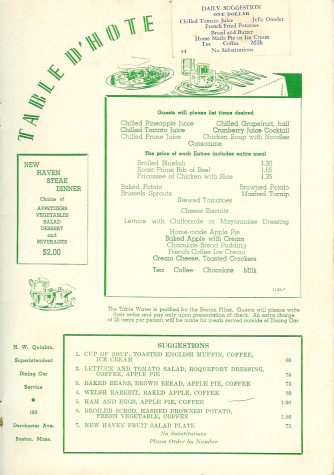Table setting refers to the way to set a table with tableware -
such as eating utensils and dishware - for serving and eating. The
arrangement for a single diner is called a place setting. The
arrangement varies across various cultures. The rules for laying a
table are not rigid. They are followed to facilitate dining and making
the table neat. The basic rules for laying the tables are given below:
1) Table Linens: Table linen has to be laid properly. A white
cloth is preferred but not mandatory. The only rule is to make
sure that linen patterns and china patterns don't clash.
2) Chargers: Chargers or dinner plates should be placed on the
table first. Chargers are decorative elements that are placed
underneath plates to add color or texture to the table. Each
plate should be set in the center of the place setting and each
place setting on the table should be set equidistant. The rest
of the components used to set a formal table will be set with
the dinner plate in mind. If a charger is used, soup and melon
bowls will be placed on top. The charger will generally be
removed just before the main course.
3) Napkins: Linen napkins should be folded elegantly and
placed in the center of the dinner plate.
4) Silverware: Silverware is to be placed in order of use. In other
words, the diner will start at the end and work his way in. The
first course will use silverware farthest from the dinner plate,
while the last course will utilize the silverware closest. Place
all silverware an inch from the table's edge.
5) Knives: Set knives on the table to the right of the dinner plate.
Technically, one should only use a knife if one is cutting
meat; however, up to three knives can be placed on the table,
in order of use. Blades should face inside, towards the table
setting.
6) Forks: Forks are to be set to the left of the dinner plate in
order of use. In most cases, there are three: one each for
seafood, the main course and the salad. When dining
formally, salads are generally served at the end of the meal.
7) Spoons: Spoons are set to the right of the knives in order of
use. If there is a melon course, this spoon will be set closest
to the plate with the soup spoon on the end. If there is a
dessert spoon, this will be set above the plate. Coffee spoons
are set on the saucer when it's time for dessert.
8) Glasses: Glasses are set above the plate to the right in order
of use. From left to right: Water glass, red wine glass, white
wine glass, champagne flute (if ordered).
9) Dessert: Dessert plates and coffee / tea cups will be set out
after dinner. If a fork is to be used with dessert, this will be
placed on the dessert plate. A dessert spoon should have
already been set above the dinner plate. Coffee spoons
should be placed on the saucer. Coffee / tea mugs aren't
used for a formal dinner.


